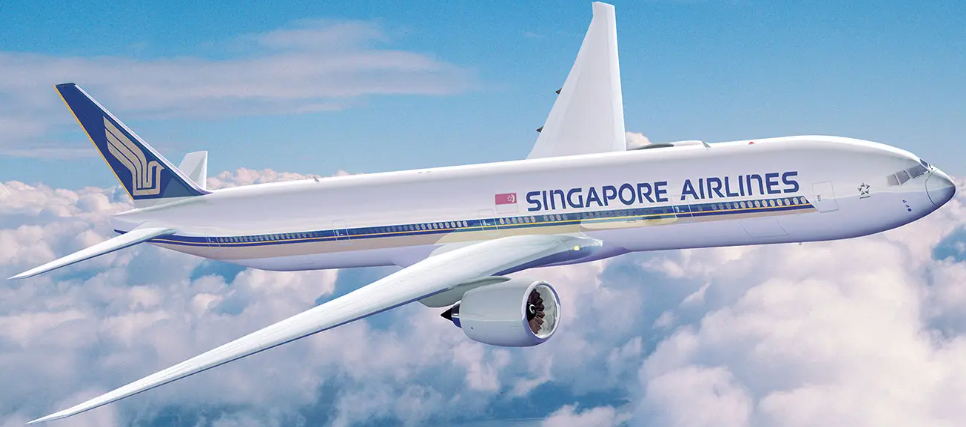With the COVID-19 pandemic pretty much out of the way, everyone and their mother has been flying out of Singapore to finally get away from the hustle and bustle of the city.
While most Singaporeans have taken this opportunity to travel and relax, Singapore Airlines (SIA) staff are hustling and bustling more than ever with the increasing demand for travel.
How busy, exactly, are SIA’s staff?
So busy that SIA experienced a record-breaking profit for FY2023/2024.
SIA Staff To Receive Bonus

SIA posted a record full-year net profit of $2.675 billion on 15 May.
According to The Straits Times, screenshots from sources familiar with the matter showed that SIA chief executive officer Goh Choon Phong had announced the profit-sharing bonus of 7.94 months for staff, including pilots.
Huat ah.
This is slightly higher than the bonus of 6.65 months that most SIA staff enjoyed last year, when some even received an additional 1.5 months for their hard work and sacrifices during the pandemic.

Shares
SIA has recommended a final dividend of 38 cents per share, to bring the total payout to 48 cents a share following an interim dividend of 10 cents a share on 22 December 2023.
The company paid out 38 cents per share in the 2022/2023 fiscal year ending 31 March 2023.
The final dividend for FY2023/2024 will be paid on 21 August 2024, subject to shareholder approval.
SIA shares closed down 0.44% at $6.81 on 15 May before the results were announced.
Record Profit For SIA

The company’s earnings increased by 24% to $2.675 billion for the 2023/2024 fiscal year ending 31 March 2024, which can be partly attributed to a better operating performance, lower tax expenses and a share of profits from associates.
Revenue rose 7% to $19 billion – a record for SIA.
Although there was a 7.6% fall in passenger yields, passenger flown revenue rose significantly by 17.3%, reaching $15.7 billion.
Cargo flown revenue, however, was 42.2% lower than the previous fiscal year, though this is nearly 30% above pre-pandemic levels. With a 1.7% increase in loads owing to the strong demand from the e-commerce market, sales were at $2.1 billion for FY2023/2024.
SIA’s expenditure increased by 8% to $16.3 billion, with non-fuel expenditure increasing by 13.5%. Despite higher volumes uplifted, a drop in fuel prices caused SIA’s net fuel costs to drop 2.5%
The company said demand for air travel remained strong throughout the year, driven by a resurgence in North Asia as China, Hong Kong, Japan, and Taiwan fully reopened their borders.
According to SIA, the number of passengers carried by Scoot rose 37.6% to 36.4 million passengers.
Passenger loads increased by 2.6 percentage points to a record 88%, with SIA reaching a new high of 87.1% and Scoot achieving 91.2%.
Expectations and Outlook
Given that the pandemic caused most recreational travel to come to a standstill for about two years, many have been able to save up more money, and are willing to splurge on holidays post-pandemic.
SIA expects air travel demand to remain healthy in the June quarter, driven by a significant rise in forward bookings to North Asia and South-east Asia.
Passenger yields will likely continue to moderate, due to airlines increasing capacity, particularly in the Asia-Pacific.
According to SIA, cargo demand strengthened towards the end of FY2023/2024. The company partly attributes this to e-commerce shipments, a growth in segments like perishables and concerts, and a shift to air freight by some shippers due to security concerns in the Red Sea region.
The company said that although cargo yields have held above pre-pandemic levles, continues to be downward pressure as industry capacity has increased.
SIA said the airline industry continues to face challenges, including rising geopolitical tensions, an uncertain macroeconomic climate, supply chain constraints and high inflation in many parts of the world.
Sustainability
SIA remains committed to its sustainability goals and aims to fulfil 5% of its total fuel requirements with SAF by 2030.
Singapore Armed Forces? No. Sustainable Aviation Fuel (SAF).
There is a goal to achieve net zero international emissions by 2050, which requires the usage of SAF. This liquid fuel reduces carbon dioxide emissions by up to 80% and can be produced from sources like waste oil and fats.
SAF, however, is not cheap.
Given that SAF is about three to five times more expensive than conventional jet fuel, the government will be imposing a levy (a tax or fee) to help airlines cope with higher fuel costs.
Because of this, we’ll be facing an increase in airfare from 2026.
Maybe ask your boss to also give you 8 months’ bonus?
In their annual sustainability report, SIA addressed the climate crisis and said: “SIA will continue to collaborate with governments, the airline industry, and partners such as aircraft manufacturers, technology providers, and fuel suppliers, both in Singapore and around the world, to help accelerate the development, production, and adoption of SAF.”




